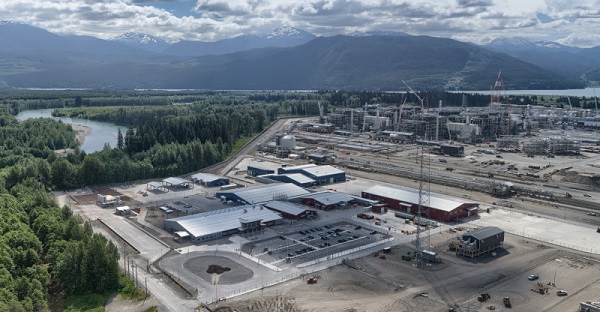Energy
Biden Has Taken More Than 200 Actions Against Domestic Oil, New Report Says

From HeartlandDailyNews
By
President Joe Biden and his administration have taken over 200 actions against the U.S. oil and natural gas industry as energy prices have gone up, according to a new report.
“President Biden and Democrats have a plan for American energy: make it harder to produce and more expensive to purchase,” the Institute for Energy Research states in a new report. “Since Mr. Biden took office, his administration and its allies have taken over 200 actions deliberately designed to make it harder to produce energy here in America.”
The analysis highlights actions Biden took on his first day in office, listing them chronologically through March of this year. The first act was canceling the Keystone XL pipeline, issuing a moratorium on all oil and natural gas leasing activities in the Arctic National Wildlife Refuge and revoking Trump administration executive orders that decreased regulations in order to expand domestic production.
Within a week of being in office, Biden issued additional moratoriums on new oil and gas leases on public lands or in offshore waters and imposed new regulations related to permitting and leasing practices, which were tied up in the courts for years. It was not until last month that a federal court upheld the first oil and natural gas lease sale on federal lands. Last December, the Fifth Circuit also ruled that Gulf lease sales must go forward.
Other actions ahead of the midterm elections include threatening to tax the oil and natural gas industry, blaming them for profiteering. Roughly six months before the general election, his administration has proposed $110 billion tax hikes on oil, natural gas and coal. In response, U.S. Sen. John Barrasso, R-Wyo., led a coalition of 24 senators expressing “grave concern” about his “continued hostility towards American energy production.”
IER published the report after the latest action taken to increase the cost of U.S. oil production and cancel plans to restock the Strategic Petroleum Reserve. The SPR has been depleted to roughly half of what it was when he first took office.
“President Biden had the chance to top up the SPR when prices were still low during the pandemic, but anti-oil-and-gas ideologues within the administration couldn’t bear to do anything that would help out producers when demand was low,” Kathleen Sgamma, president of Western Energy Alliance, told The Center Square. He then drained it “for political reasons and it’s long overdue to fill the SPR back up. Like many other politically driven decisions from this administration that distort energy markets, the government will have to spend more taxpayer money than if it had rational energy policies.”
Ed Longanecker, president of the Texas Independent Producers & Royalty Owners Association, told The Center Square that the Biden administration withdrawing approximately 250 million barrels from the SPR “was another dangerous example of putting politics over national security. The fact that some will believe the decision to cancel contracts to refill the SPR is due to a newly discovered fiscal consciousness is both nonsensical and alarming. Poorly conceived, albeit intentional energy policy results in higher costs for consumers, global emissions, and inflation, while putting our economy and energy security at risk.”
Daniel Turner, Founder and Executive Director for Power The Future, said instead of using American-produced oil to refill the SPR, Biden was “embracing insanity by putting the green agenda ahead of our families and our national security. Only in Joe Biden’s head does it make sense to lower costs by raising fees.” In light of Iran’s recent attacks against Israel, he said, “the world and our allies need a strong America that is fully utilizing our energy strength. Instead, the only things Joe Biden wants to strengthen is Iranian oil and Washington’s tax revenue.”
As the Biden administration imposes more fees on American oil producers, Iran’s oil exports reached $35 billion within the last 12 months, according to Iranian Labour News Agency. “Despite the reimposition of U.S. sanctions on Tehran in 2018, Chinese purchases of Iranian oil have allowed the country to maintain a positive trade balance,” Reuters reported. “Without oil exports, Iran would have registered a $16.8 billion trade deficit.”
U.S. House Republicans last month passed several bills and resolutions to strengthen the U.S. oil and natural gas industry, The Center Square reported. Only a handful of Democrats, largely from Texas, supported them.
Texas leads the U.S. in oil and natural gas production, having broken records in the last few years, The Center Square has reported. Because the majority of oil and natural gas is produced on private land and a bipartisan group of Texas elected officials and regulatory agencies are supportive of the industry, Texas has been able to achieve what most states have not.
Those in the Texas energy industry argue that, without their ingenuity and technological advancement, the U.S. would not be as energy independent as it is and prices would be higher. When the Russian-Ukrainian crisis hit, it was Texas LNG exports that provided a “lifeline” to European countries, a TIPRO analysis found.
“With so much uncertainty in the world, the need for reliable, responsibly produced energy from a stable trading partner has never been more crucial,” Texas Oil & Gas Association President Todd Staples said. “Texas is that trade partner. Our producers, pipelines, refineries, and exporters answer the call to alleviate the global energy crisis, made worse by war.”
He also argues that Texas’ production records “are not guaranteed. We cannot take for granted that this industry can continue to rewrite its record book in the face of federal policies blatantly designed to undermine progress. Delayed permits, canceled pipeline projects, closed and delayed federal leasing programs and incoherent regulations hurt American consumers and stifle our ability to deliver energy freedom and security around the world.”
Bethany Blankley is a contributor to The Center Square.
Originally published by The Center Square. Republished with permission.
Alberta
Temporary Alberta grid limit unlikely to dampen data centre investment, analyst says
From the Canadian Energy Centre
By Cody Ciona
‘Alberta has never seen this level and volume of load connection requests’
Billions of investment in new data centres is still expected in Alberta despite the province’s electric system operator placing a temporary limit on new large-load grid connections, said Carson Kearl, lead data centre analyst for Enverus Intelligence Research.
Kearl cited NVIDIA CEO Jensen Huang’s estimate from earlier this year that building a one-gigawatt data centre costs between US$60 billion and US$80 billion.
That implies the Alberta Electric System Operator (AESO)’s 1.2 gigawatt temporary limit would still allow for up to C$130 billion of investment.
“It’s got the potential to be extremely impactful to the Alberta power sector and economy,” Kearl said.
Importantly, data centre operators can potentially get around the temporary limit by ‘bringing their own power’ rather than drawing electricity from the existing grid.
In Alberta’s deregulated electricity market – the only one in Canada – large energy consumers like data centres can build the power supply they need by entering project agreements directly with electricity producers.
According to the AESO, there are 30 proposed data centre projects across the province.
The total requested power load for these projects is more than 16 gigawatts, roughly four gigawatts more than Alberta’s demand record in January 2024 during a severe cold snap.
For comparison, Edmonton’s load is around 1.4 gigawatts, the AESO said.
“Alberta has never seen this level and volume of load connection requests,” CEO Aaron Engen said in a statement.
“Because connecting all large loads seeking access would impair grid reliability, we established a limit that preserves system integrity while enabling timely data centre development in Alberta.”
As data centre projects come to the province, so do jobs and other economic benefits.
“You have all of the construction staff associated; electricians, engineers, plumbers, and HVAC people for all the cooling tech that are continuously working on a multi-year time horizon. In the construction phase there’s a lot of spend, and that is just generally good for the ecosystem,” said Kearl.
Investment in local power infrastructure also has long-term job implications for maintenance and upgrades, he said.
“Alberta is a really exciting place when it comes to building data centers,” said Beacon AI CEO Josh Schertzer on a recent ARC Energy Ideas podcast.
“It has really great access to natural gas, it does have some excess grid capacity that can be used in the short term, it’s got a great workforce, and it’s very business-friendly.”
The unaltered reproduction of this content is free of charge with attribution to the Canadian Energy Centre.
Energy
LNG Export Marks Beginning Of Canadian Energy Independence

From the Frontier Centre for Public Policy
Kitimat’s LNG launch ends years of delay, weak policy and lost opportunity. This is a strategic turning point for Canada
Last week marked a turning point for Canadian sovereignty. On July 1, 2025, the tanker Gaslog Glasgow departed Kitimat, B.C., carrying Canada’s first-ever commercial liquefied natural gas (LNG) export to Asia. More than a shipment, it signalled the end of our economic vassalage to the United States and a long-overdue leap into global energy markets.
LNG Canada CEO Chris Cooper called it a “truly historic moment.” He’s right. The cargo left just days after the Kitimat plant produced its first liquefied natural gas and entered operation. The $40-billion megaproject, the largest private-sector investment in Canadian history, is now a fully functional Pacific Coast export hub. It can ship up to 14 million tonnes annually, and expansion is already being discussed.
Yet this success didn’t come easily. Despite being one of the world’s largest natural gas producers, Canada lacked an LNG export terminal, largely due to political delays, regulatory hurdles and lack of federal support. That this happened at all is remarkable, given nearly a decade of federal sabotage. Prime Minister Justin Trudeau’s ideological hostility to natural gas meant rebuffed allies, stalled projects and choked-off investment.
Foreign leaders (from Japan and Germany to Greece) practically begged Ottawa to green-light Canadian LNG. Trudeau dismissed them, claiming there was “no business case.” No one in his caucus dared contradict him. The result: lost time, lost markets and a near-complete surrender of our energy advantage.
But the business case was always there. Kitimat proves it.
The U.S. has been exporting LNG since 2016, giving them a nearly decade-long head start. But Canada has something our neighbours don’t: the Montney Formation. Spanning northeast B.C. and parts of Alberta, it covers about 130,000 square kilometres and holds enormous gas reserves. Montney gas, abundant and close to tidewater, trades at roughly half the Henry Hub price, giving Canada a significant cost edge.
Location seals the deal. Kitimat, perched on the Pacific, bypasses the congested Panama Canal, a major chokepoint for U.S. Gulf Coast exports, and offers a shorter, more direct route to energy-hungry Asian markets. This geographic advantage makes Canadian LNG not only viable but globally competitive.
In 2024, Canada exported about 8.6 billion cubic feet of gas daily to the U.S. via pipeline. With Kitimat, we finally begin breaking that one-market dependency. We also start clawing back the price differential losses that come with being captive sellers. This is how you build productivity, strengthen the dollar and reclaim economic independence from Washington.
The economic ripple effect is massive. The Kitimat build created 50,000 jobs at its peak, generated $5.8 billion in Indigenous and local contracts and left behind more than 300 permanent positions. Provincial revenues are projected in the tens of billions. In an era of anaemic growth, this is real stimulus and has staying power.
Predictably, critics raise environmental concerns. But this critique ignores global realities. Exporting Canadian natural gas to countries still burning coal is not a step backward—it’s a practical advance. Natural gas is up to 25 per cent cleaner than coal when comparing full lifecycle emissions (that is, from extraction to combustion). Global emissions don’t respect borders. If Canada can displace dirtier fuels abroad, we’re part of the solution, not the problem.
And this is only the beginning. Cedar LNG and Woodfibre LNG are already under construction. Atlantic Coast projects are in the queue. We must now defend this momentum against bureaucratic delays, activist litigation and ideological roadblocks.
LNG is not a climate villain. It’s a bridge fuel that cuts emissions, creates wealth and helps fund our national future.
Marco Navarro-Genie is vice-president of research at the Frontier Centre for Public Policy and co-author, with Barry Cooper, of Canada’s COVID: The Story of a Pandemic Moral Panic (2023).
-

 illegal immigration2 days ago
illegal immigration2 days agoICE raids California pot farm, uncovers illegal aliens and child labor
-

 Uncategorized13 hours ago
Uncategorized13 hours agoCNN’s Shock Climate Polling Data Reinforces Trump’s Energy Agenda
-

 Opinion6 hours ago
Opinion6 hours agoPreston Manning: Three Wise Men from the East, Again
-

 Addictions6 hours ago
Addictions6 hours agoWhy B.C.’s new witnessed dosing guidelines are built to fail
-

 Business3 hours ago
Business3 hours agoCarney Liberals quietly award Pfizer, Moderna nearly $400 million for new COVID shot contracts
-

 Business1 day ago
Business1 day agoTrump to impose 30% tariff on EU, Mexico
-

 Energy1 day ago
Energy1 day agoLNG Export Marks Beginning Of Canadian Energy Independence
-

 Business1 day ago
Business1 day agoCarney government should apply lessons from 1990s in spending review






